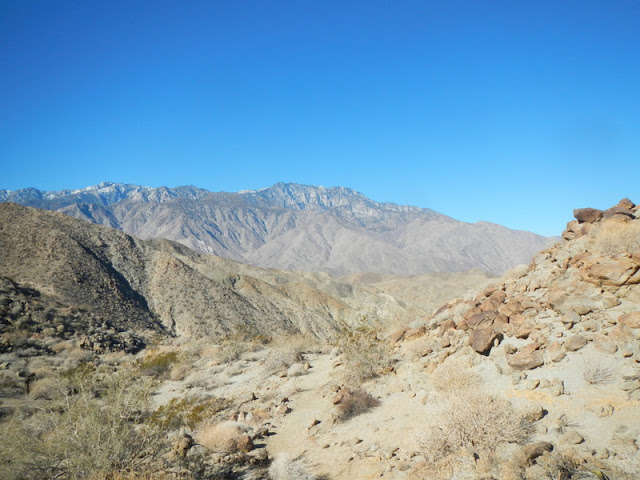Ancient Lake Cahuilla filled the Imperial Valley from the Colorado River Delta in Mexico north to Indio. It is thought to have reached a depth of 300 feet. This fresh water lake would have been six times the size of the current Salton Sea. I was reminded of this site by an article about Earthcaches
http://earthcache.org/ on the Geocaching newsletter.
Evidence of the shore line can be seen today at the southeastern edge of Indio. The water level was about 40 feet deep at this point. The rocks below the old waterline are covered by travertine deposits. Travertine, sometimes called tufa, is a freshwater lime deposit. It is formed in waters that have a lot of calcium carbonate (what makes up shells) and algae. The algae uses the carbon dioxide from the calcium carbonate in photosynthesis leaving the lime.
Evidence of Lake Cahuilla's gradual evaporation can also be seen at the coordinates. In this case the evidence comes from what archaeologists have interpreted to be Native American fish traps. These traps are roughly circular piles of rocks that were built along the shore of the lake. Fish would swim into the circle and have a hard time figuring out which way to swim back out of them.
The coordinates bring you to a line of traps built along the hillside at about the same elevation. If the archaeologist's interpretation of the rock piles are correct, the shoreline of the lake would have been at this elevation at the time these traps were used. As you can see these traps are below the high water mark shown by the presence of travertine on the rocks.
A little investigation around the coordinates and you can find other lines of traps at different elevations. The interpretation is that as the lake level fell due to evaporation, another set of fish traps would have to be made since the traps at the higher elevation would no longer be in the water and would be useless as fish traps.
 |
| Water level indicated by the ring of colour on the surrounding hills. It is similar to the ring kid's leave on a bathtub after playing outside all day. |
 |
| Newer fish trap |
 |
| Travertine deposits |
 |
| It is easier to see the pattern fish traps from above. |
 |
| Travertine deposits can be over 1/2 inch thick. |
 |
| Older fish trap higher up on the hill side. |


























































